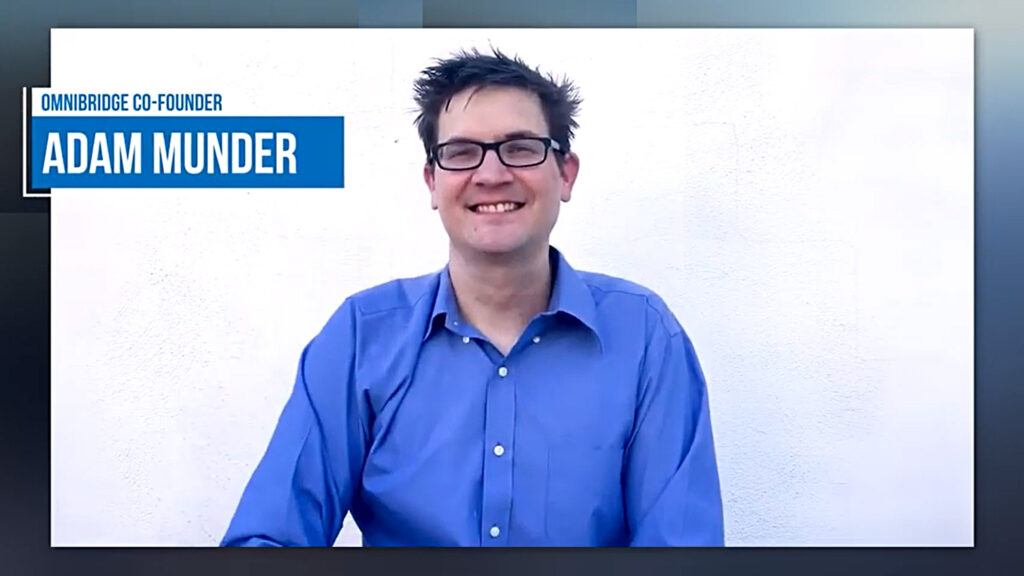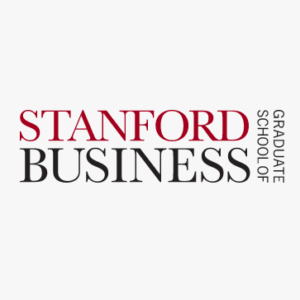The following excerpt from a white paper by Charles O’Reilly and Sheila Melvin was first published by the Stanford Graduate School of Business.
Two Success Stories
EGI aimed to help transform Intel and incubate the company’s next big business and build a repeatable process so this could happen every few years. But cultural transformation was a key aspect of this, and Ben Moshe talked about how even ventures that failed could still have a positive impact on the Intel culture. “When you’re a general manager in the incubator for 12 weeks and you go back to your business unit, you’re not the same person. You’ve learned things that you never would in your regular job and gotten a great leadership development experience.” So, whether funded or not, venture teams that went through the EGI incubator were all considered success stories.

One Funded . . .
When Adam Munder joined Intel in 2011, he was a development engineer who had a variety of work experiences under his belt. These included a stint at a large robotics company and graduate studies in nanoscience and technology, with a focus on nanoengineering and an emphasis on lithography in the semiconductor manufacturing industry.
Munder also had a unique personal background. At the age of one, he was diagnosed with spinal meningitis and fell into a two-week-long coma; when he awoke, he was profoundly deaf. He grew up immersed in Deaf culture with American Sign Language, or ASL, his native language and preferred communication method. To enable Munder to fully experience Intel’s culture, interact with his peers, and have the same opportunities as any other engineer, Intel provided him with two interpreters who accompanied him throughout each work day. This helped support Munder in meetings and, he explained, in those non-meeting moments that most hearing people take for granted—things like chatting with a coworker who stopped by his desk, meeting new people in the café, and participating in teambuilding activities. Despite this help, adjusting to Intel was not easy. As Munder told the Intel Newsroom in 2015:
There were a lot of different challenges when I first joined Intel. The first six months, I was completely lost. I didn’t understand Intel’s language, it was very difficult for me to figure out the Intel culture. The interpreters had to listen to the Intel language and they would have to figure out how to translate it to English so that it made sense and understand the concept behind the science. And then they would have to interpret it and translate it into the American Sign Language for me.2
Over time, Munder, who was based in Phoenix, adjusted to the Intel culture. “Intel has been extremely supportive and dedicated to my success,” he said. “They have made it possible for me to work like any other engineer with the ability to understand and be understood anywhere, anytime during my workday. My Deaf friends [outside Intel] are not as fortunate. If they have access to interpreters it is only for specific meetings and requires two weeks advanced notice.” Munder also became well-known at Intel as an advocate for people with special needs and a role model for other Deaf and challenged employees. So, in 2015, when a software team was developing a patent for a sign language translation app that provided real-time translation between ASL and spoken English, they approached Munder and asked him to join them. Despite their efforts, the patent was declined. “Knowing the importance of a device like this for the Deaf community, it was disappointing, but it also became the motivation I needed to bring his type of product to the marketplace,” Munder recalled. “This is my passion to help enable all Deaf people to have access to real-time, reliable intepretation. I am extremely fortunate to have access to full time communication at my job, but I would benefit from having this in my personal life for when I go to the doctor or meet my children’s teachers and so many other situations.” The failure of the patent led Munder to think more about Deaf people at other companies who didn’t have access to interpreters as he did at Intel and, more importantly, Deaf people who would never be hired in the first place because of the need for interpretation. “I want them to have access to the same opportunities I do and to fully integrate into the hearing world like me,” Munder said. Likewise, it caused him to see the stark contrast between his ability to communicate with hearing people at work versus the difficulty he faced away from the office in his personal life. He explained:
It reminds me of The Wizard of Oz movie where one world is full and in rich color and the other is black and white. My life at Intel is in full color where I can communicate with anyone I encounter to learn new perspectives and create new relationships. Outside of Intel, my life can be limited, writing back and forth, in a language that is not native to me. With hearing people, my communication is truncated, abbreviated, and basic, without the nuances of language. Deaf people, like hearing people, enjoy those impromptu conversations that happen at the grocery store, the bank, or other unexpected places where you can interact with your community. People aren’t patient enough to dedicate the time needed to write back and forth and they become frustrated.
So after the patent was declined, Munder requested, and received, access to all the documentation materials that would allow him to pursue the app idea with external investors. “In 2016, I began writing my own start-up plan and quickly realized I needed a team to make this happen,” Munder said. He began seeking VC money but wasn’t gaining much traction—and then Ben Moshe sent out the announcement regarding the launch of EGI. “Upon reading this email, I knew I had to get the 2015 patent team together to try this again.” Munder recalled. “The difference I saw in this approach was we would be given access to experts in finance, legal, business, and other areas of engineering to help us fully develop our idea with a go-to-market strategy, market analysis, and guidence as a start-up company.” Munder and his team were selected to pitch their idea. “With the additional training and handson support, I was confident that I was pitching a marketable product to the EGI Venture Board,” Munder said. “More importantly, our product was based on a solid technical foundation of Intel’s core technologies, using some of the best engineers in the industry.” Their idea was one of those selected for the incubator. “I have surprised myself with how much I’ve grown as a leader and in my motivation over these 12 weeks,” said Munder. “I was able to assemble a diverse team with different skills, backgrounds, ethnicities, and genders who respect each other for what each member brings to the team.” He continued:
The most important part of our experience was to learn to listen hard to our customers to understand their pain. Most engineers don’t have that opportunity and in the case of my team it was crucial because everyone on my team can hear. They needed to understand what this device means to someone like me. It changed the team dynamic, they became more empathetic to the challenges Deaf people experience in obtaining employment and how the team worked with me. This knowledge helped us to develop a proof of concept.
After completing the incubator, Munder’s team was funded and he found himself operating as GM and CEO of a new venture. He explained:
Initially, I felt somebody else would be better suited to lead the team than me. EGI convinced me that my passion, vision, and experience as a Deaf person was what was needed to lead the team. I also represented the customer which is crucial in any product development. EGI continues to support and encourage me to lead this team and are excited to develop me as a leader who has my unique perspective, as a Deaf engineer. I focus on developing as a manager and my business acumen. It has been an amazing learning experience.
With the venture funded, Munder concentrated on developing a product that would translate, in real-time, ASL to spoken English; the goal was to have a minimum viable product by the end of 2020 and begin beta testing in early 2021. This was a very complex undertaking for a variety of reasons, not the least of which was the unique nature of ASL. Munder explained:
It’s a different language and, similar to other spoken foreign languages, has its own syntax, structure, and grammar. Part of that structure and grammar includes facial expression and body movements. English can be written, whereas American Sign Language, it’s difficult to find a word-to-word translation in English because signing includes the facial expression, the body movement and abbreviations.
Munder’s long-term vision was to create translation software that would work on a mobile phone, but the shorter-term goal was a separate physical device. He explained:
We’re creating a small device with two displays—one display for the signing Deaf person and another for the English-speaking, hearing person. The Deaf user signs to the camera, the camera records their signing and translates it to the other display for the hearing person to be able to read and hear.
We received feedback from different customers about the size of the display, the accuracy of the interpretation, something that they feel like they can be able to trust. Deaf people want to make sure that they can see what’s being translated. So as they sign, their display shows how it is translated into English, so they can confirm the accuracy. It is important this happens in real-time, so they can carry on a conversation without delay. That’s our vision.
The six-member team was collecting data from individual ASL signers and developing an AI-based translation system using a 3D transformer model. “We’re in the process of hiring a computer vision engineer and a senior software engineer,” said Munder. “We have our core team who have been together since the beginning of this project, but plan to add more team members to move faster.” If the MVP proved successful, they would continue to mature the technology and eventually diversify into different domains. Munder hoped the product could one day help prevent young Deaf people from suffering language deprivation and, through partnerships with universities and corporations, help Deaf individuals succeed in education and the workplace. He was passionately determined to succeed. As he explained:
Personally, I want to see every Deaf person who primarly communicates in ASL have access to our product. I know the frustration Deaf individuals have of feeling passed over because of their need for interpreters. They feel unimportant, that they need to adapt to the hearing world or be “fixed” instead of being appreciated for their culture, language, and unique perspectives. I’d really love for them use this device to bridge the gap between these two worlds, Deaf and hearing, so they can be understood and understand others. For me, it’s just opening up a world of experiences for the Deaf and a chance for them to share their world. I want every Deaf person to feel included and confident in all situations they have with hearing people.
That said, Munder also saw possibilities for the product beyond the Deaf world. He noted, “There are so many adjacent markets out there that could benefit from this technology. I really want to aggressively pursue these as well.” But, said Munder, when he shared this enthusiasm with Ben Moshe, “He said, ‘Great. For new ideas, reapply. Come back into the incubator again with these better ideas for these adjacent markets, but make this work first.’”

Excerpt from a white paper published by Stanford Graduate School of Business